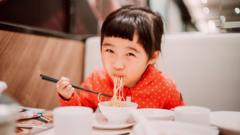Chinese food is having a delicious moment around the globe, and it's all about more than just chow mein. With restaurant chains rapidly expanding, especially in Singapore—where over 75% of the population is ethnically Chinese—culinary offerings are showing off the vast richness of Chinese cuisine.
Take a stroll down Liang Seah Street, and you'll discover grilled fish smothered in numbing chillis, spicy cumin lamb skewers, and fiery rice noodles with snails—all examples of the detailed and varied flavors from China's regions. This excitement is fueled by China's evolving soft power, highlighted by innovations like Labubu dolls and humanoid robots, but the culinary scene is presenting an underrated option to win hearts globally.
Chain restaurant Luckin, akin to Starbucks, has burst onto the Singapore scene and expanded overseas, showcasing the growing appetite for authentic Chinese fare. The market's diversity allows restaurants to experiment and compete, validating their potential for expansion to other Southeast Asian countries and beyond.
Chefs like Claire Wang from Nong Geng Ji are eager to change the narrative about Chinese cuisine, moving away from simplified dishes that dominated Western views, such as orange chicken and chow mein. The more adventurous global palate now craves proper, complex flavors, leading to an explosion of immersive dining experiences showing off regional delights.
Amid growing competition and a more refined public palate, these chains strive to reposition Chinese food as a marker of sophistication rather than lowbrow. They aim to serve not just sustenance but a cultural experience, planting seeds for "ping-pong diplomacy" through shared appreciation of flavors. As the culinary wave surges, many believe that Chinese food could be China’s delicious way to sweeten international relations.
Take a stroll down Liang Seah Street, and you'll discover grilled fish smothered in numbing chillis, spicy cumin lamb skewers, and fiery rice noodles with snails—all examples of the detailed and varied flavors from China's regions. This excitement is fueled by China's evolving soft power, highlighted by innovations like Labubu dolls and humanoid robots, but the culinary scene is presenting an underrated option to win hearts globally.
Chain restaurant Luckin, akin to Starbucks, has burst onto the Singapore scene and expanded overseas, showcasing the growing appetite for authentic Chinese fare. The market's diversity allows restaurants to experiment and compete, validating their potential for expansion to other Southeast Asian countries and beyond.
Chefs like Claire Wang from Nong Geng Ji are eager to change the narrative about Chinese cuisine, moving away from simplified dishes that dominated Western views, such as orange chicken and chow mein. The more adventurous global palate now craves proper, complex flavors, leading to an explosion of immersive dining experiences showing off regional delights.
Amid growing competition and a more refined public palate, these chains strive to reposition Chinese food as a marker of sophistication rather than lowbrow. They aim to serve not just sustenance but a cultural experience, planting seeds for "ping-pong diplomacy" through shared appreciation of flavors. As the culinary wave surges, many believe that Chinese food could be China’s delicious way to sweeten international relations.

















